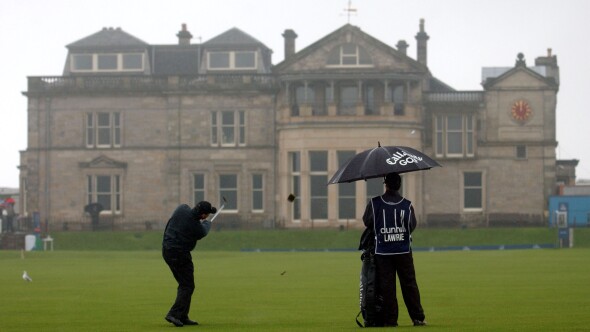Traveling to play the greatest golf courses in the world is reward enough, but every now and then such a pursuit crosses roads with historic events that are even more important than the here and now.
Perhaps the best example of this is the par-3 12th hole at Waterville Golf Links, known as the "Mass Hole."
Waterville's links are as storied and revered as any in Ireland, easily in a class with the likes of Lahinch, Ballybunion Old, the Dunluce at Royal Portrush and Royal County Down as one of the finest on the island.
The origin of golf on these links dates back to 1889, when men who came to the area to work on the trans-Atlantic cable turned their attention to recreation in their time off and a modest nine-hole course was laid out to accommodate.
Time, changes in technology and powerful forces such as two World Wars altered agendas, and after World War II the humble course sat abandoned for decades. Irish-American John Mulcahy recognized the potential of the property and called upon his New York home pro at Winged Foot, 1948 Masters champion Claude Harmon, along with Irish golf architectural legend Eddie Hackett, to build 18 holes along the peninsula in Ballinskelligs Bay.
From the start, all involved in the project knew that this track of rolling dunes land was something special, different. It was as if the land was the epicenter of the ancient, mystic origins of Ireland's Celtic past.
"Sacred ground" at Waterville
The par-3 12th hole embodies Waterville's intertwining of the then and now. When Hackett set out to design the hole, he was convinced that a towering tee shot from the top of one of Waterville's many stunning dunes down into the flat protected by the embrace of the dunes would make for the perfect par 3. Only the Irish laborers tasked with building the course refused to comply, pleading that the location of the intended green was "sacred ground." They were correct.
During a difficult period in Ireland's sometimes-tortured history, British rulers declared a law barring the Irish from practicing Catholicism. Locals refused to comply and they used the low area protected by the dunes to celebrate Mass, baptisms, weddings and the like. They would post lookouts atop the dunes, and because the British soldiers were the only ones with horses, if they saw a dust cloud rising up, they would disperse in every direction, sometimes remaining hidden in the deep grass and hills until awaiting the safety of the night. Ultimately, the British got wise to the tactic, capturing the Catholic priest and sending him off to a prison ship where ultimately he was beheaded.
Hackett ended up cutting the green atop the opposite dune from the tee, stretching to 210 yards from the tips, protecting nature's church and creating one of the great par 3s in the world of golf.
If you follow the path from the tee box to the green that runs atop of the dunes, you can avoid the steep decent and the sharp rise back up to the putting surface, but I can assure you it is well worth the effort. I remove my hat when I reach the flat and will admit that I am not immune to getting a wee bit misty eyed just the same, but regardless of your sensibilities, you have to appreciate how golf once again provides an opportunity to both step back while moving forward.


















